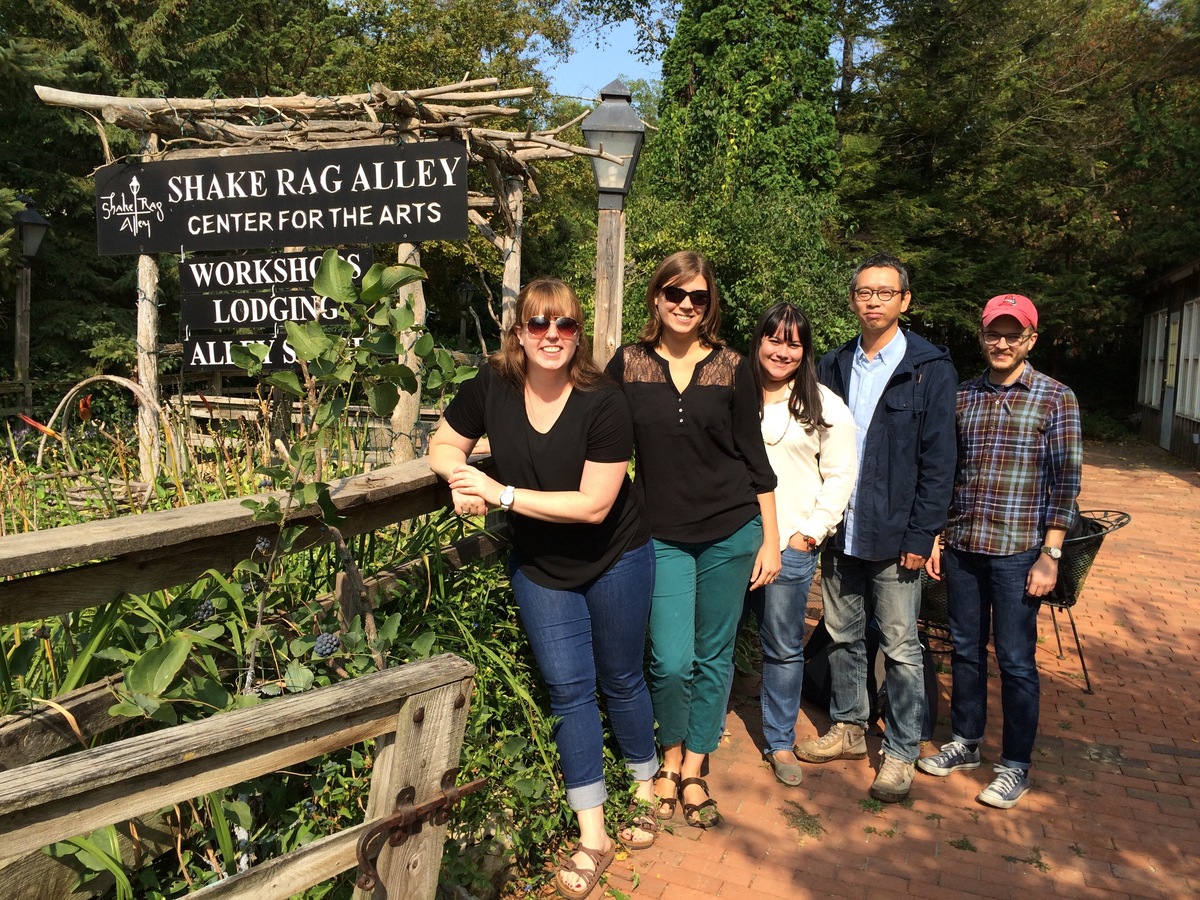Bolz Center helps arts organizations to revitalize Wisconsin communities

Wisconsin Business MBA students are working with Shake Rag Alley to help the art center expand. (Photo courtesy of Sherry Wagner-Henry)
Nestled on a quiet street near Brewery Creek, the nine cabins and limestone buildings that make up the core of Shake Rag Alley look like a quirky postcard from Wisconsin’s mining village past.
But the nationally renowned art center and writing retreat in Mineral Point is actually more interested in the future. Shake Rag leaders are looking to expand, and to do so, they’ve turned to another historic center: the Bolz Center for Arts Administration at the University of Wisconsin–Madison’s Wisconsin School of Business.
The Bolz Center is the oldest arts administration graduate training program in the country and is at the forefront of a movement known as “creative placemaking,” which gives arts organizations a central role in urban planning and economic development efforts — and benefits local economies in the process.
“Creative placemaking is putting the arts at the heart of urban planning and economic revitalization efforts,” says Sherry Wagner-Henry, director of the Bolz Center. “This goes well beyond simply commissioning public sculptures or murals as the frosting on the cake of a community project. It’s about involving artists from the beginning to think about what makes a place unique, and how we can build sustainable growth strategies around that identity.”
Through the Bolz Center, arts administration MBA students work as consultants for nonprofit arts organizations across Wisconsin that want to implement creative placemaking initiatives in their communities. The students develop relationships with organizations and then offer approaches to help them partner with community leaders to reach their goals.
Shake Rag Alley recently approached the Bolz Center to help develop a strategic plan that will identify steps to build on their past success and chart a strong course for future growth. Wisconsin MBA students are currently in the process of identifying some of the center’s challenges.
“They’re bringing a fresh perspective to the situation and providing recommendations to ensure Shake Rag Alley’s next 10 years are as productive as its first decade,” says Wagner-Henry. “Our approach is not to come in as a third-party expert and tell people what they have to do. We want to be a partner who can offer sustainable approaches for meeting your goals, whether that’s developing a strategic plan, looking at how the board can involve different sectors in the community, or identifying program activities that can build broad support.”
In another example, two MBA students recently reached out to Wormfarm Institute, a non-profit arts residency near Reedsburg that fosters connections between agriculture and the arts. The students analyzed the organization’s financial capacity, recommended financial tools and tracking mechanisms, and offered ideas to help grow and develop the institute’s board as a means of bringing community leaders together to support its programming and mission.
The Wormfarm Institute is collaborating with the City of Reedsburg to create new regional events, such as Fermentation Fest and the Farm/Art DTour. “This partnership serves as a model for how creative placemaking approaches can build strong communities and revitalize rural economies,” says Wagner-Henry.
Subscribe to Wisconsin Ideas
Want more stories of the Wisconsin Idea in action? Sign-up for our monthly e-newsletter highlighting how Badgers are taking their education and research beyond the boundaries of the classroom to improve lives.




